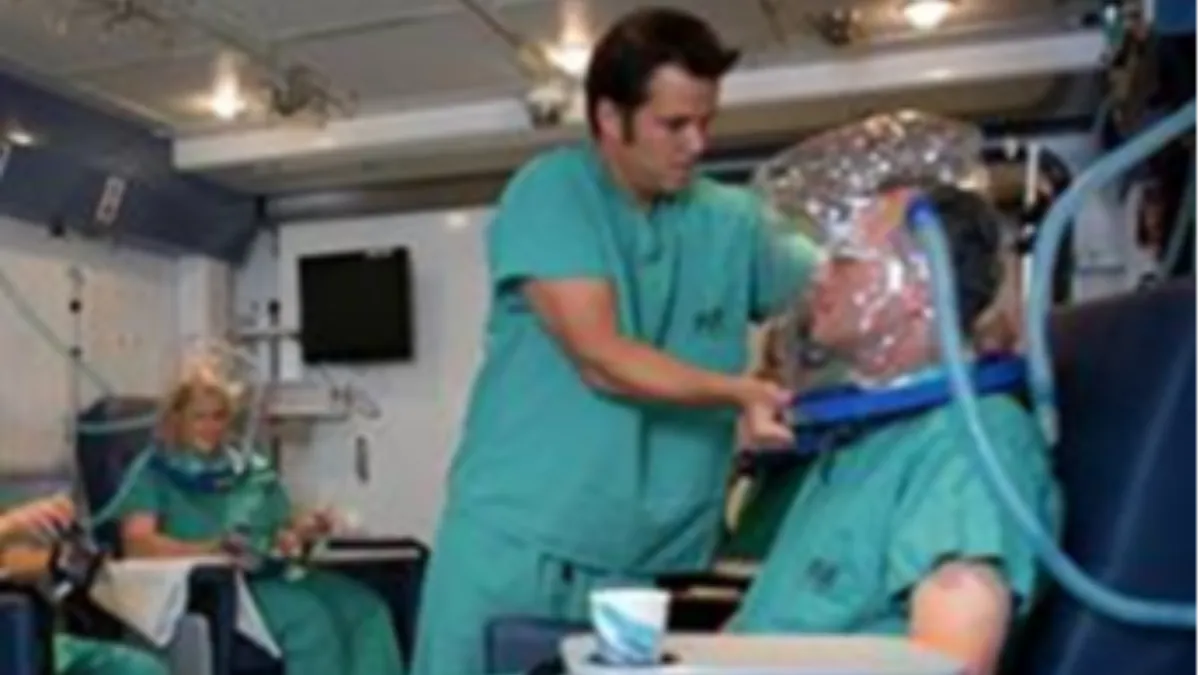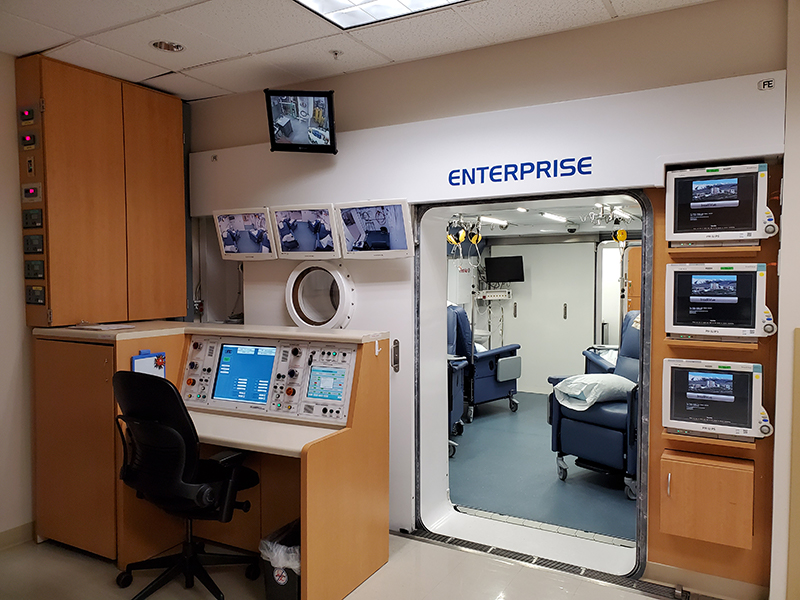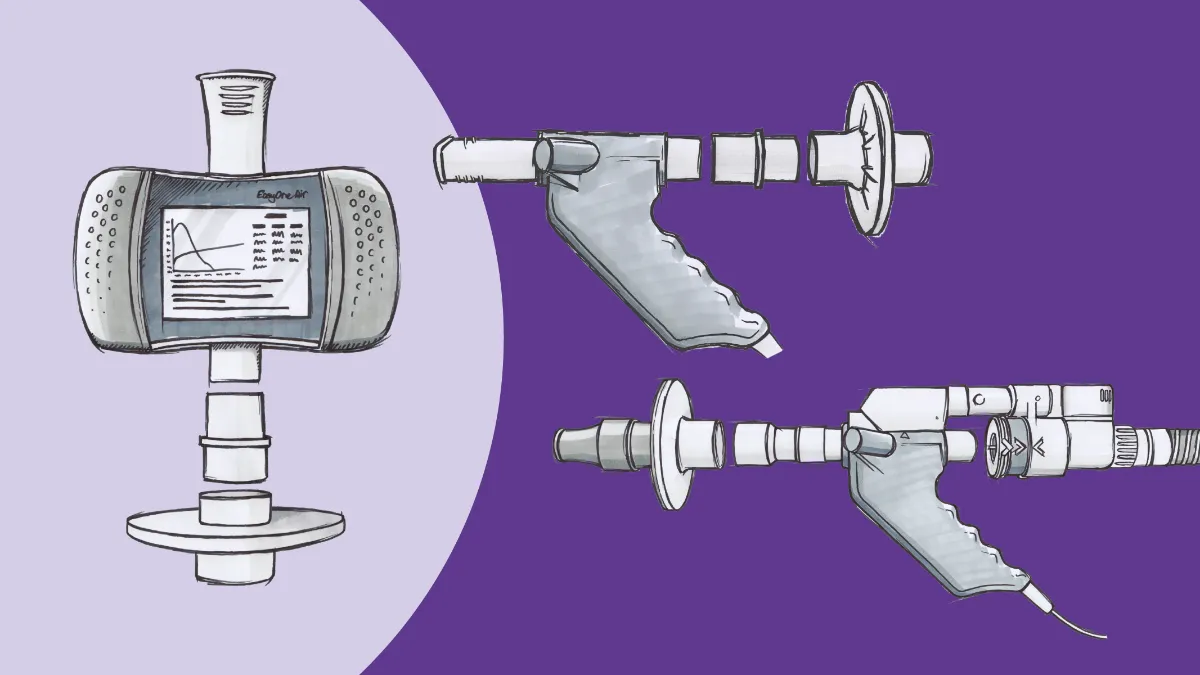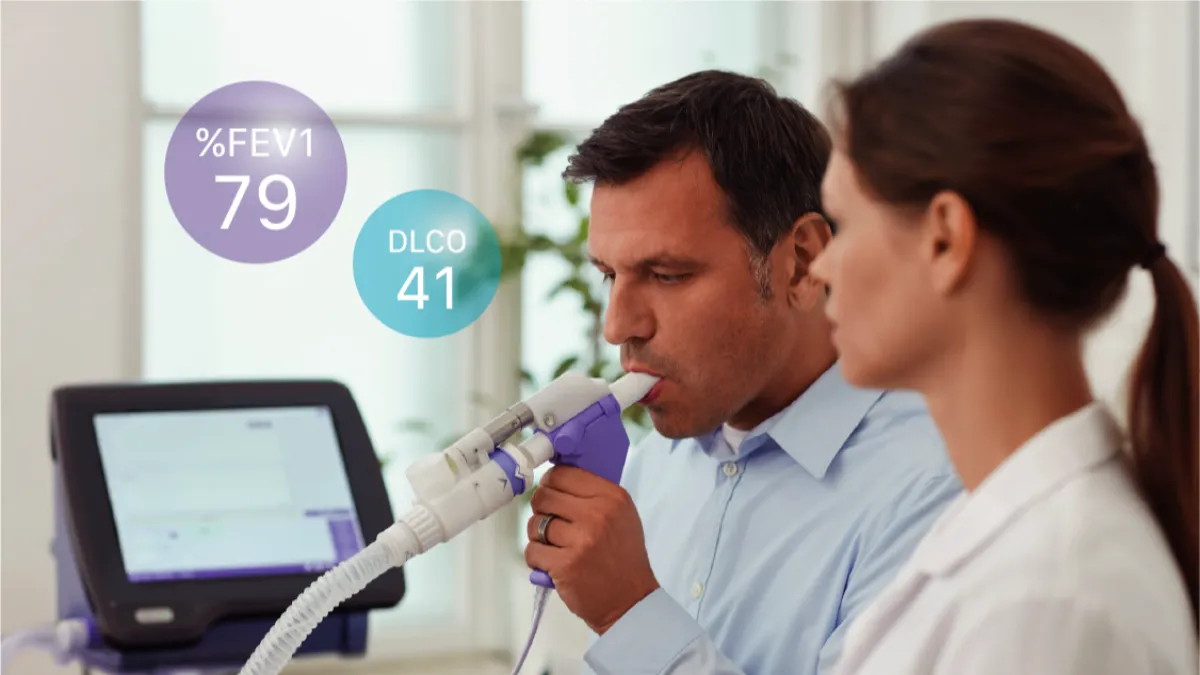Adjusting for altitude - DLCO testing for different barometric pressures
A study from Intermountain Medical Center, Utah, using ndd’s accurate and portable EasyOne Pro LAB.

Altitude affects lung function. While this is abundantly clear at extreme altitudes—for example when climbing Everest—altitude also affects lung function in many more day-to-day scenarios and at much lower altitudes.
This is something that needs to be considered by clinicians during pulmonary function testing, in particular when assessing the diffusing capacity of the lungs for carbon monoxide (DLCO). DLCO is the most widely used pulmonary function test for evaluating gas transfer in the lungs and has been shown to be a powerful predictor of survival in patients with COPD1.
Enter Dr. Matt Hegewald, a pulmonary critical care doctor and medical director of the pulmonary function and blood gas laboratory at the Intermountain Medical Center. He is also an Adjunct Professor of Medicine at the University of Utah.

Dr. Matt Hegewald
“…when we compare patients that come to us from lower altitudes with those from higher altitudes like Wyoming, Colorado, or Idaho… we wanted to make sure that our DLCO results aren’t affected.”
Dr. Matt Hegewald, Intermountain Medical Center, Utah
“In Utah, we’re at an altitude of about 1400 meters, and we have patients referred to us from various labs at varying altitudes. We wanted to make sure that when we compare patients that come to us from lower altitudes with those from higher altitude locations like Wyoming, Colorado, or Idaho for example, that the results were accurate. We wanted to make sure that our DLCO results aren’t affected by altitude.”
How to adjust DLCO for barometric pressure #
It is well known that one of the environmental factors that influence DLCO is barometric pressure, with the ERS/ATS publishing DLCO standards for this in 20172. However, one of the recommendations in the DLCO standards was that research be performed to determine if the current equation for adjusting DLCO is still accurate using newer technology.
Matt explains, “The original work on this was done back in the 1980s using what is now an outdated method, the Bag-in-Box. They used this method to calculate changes in DLCO with simulated elevation and then proposed to correct for this by altering the content of inspired oxygen3.
While this has been updated with the PAO2 adjustment—the adjustment for the alveolar partial pressure of oxygen—our goal was to develop a new equation for adjusting DLCO based on barometric pressure using current rapid gas analyzers—to ensure accuracy. We also wanted to include individuals with COPD, as this hadn’t been done before."

The test center at Intermountain Medical Center, Salt Lake City, Utah.
“Our goal was to develop a new equation for adjusting DLCO based on barometric pressure using current rapid gas analyzers—to ensure accuracy”
To do this, Matt and his team devised a study that included subjects with COPD and irreversible airflow obstruction, as well as healthy control subjects. DLCO was measured at ambient conditions (1400m altitude) and at simulated altitudes of 2500m and 3800m in a multi-chamber hypobaric/hyperbaric chamber.
However, to be able to perform these measurements, Matt needed portable equipment that could fit into the multi-chamber hypobaric/hyperbaric chamber. “We couldn’t have done this study with current lab-based DLCO systems because they’re not portable. Which is why we used the EasyOne Pro LAB from ndd Medical Technologies. They are the only devices that are so readily mobile. They are self-contained instruments that can easily be moved between a multiplex hyperbaric chamber and a PFT lab, or wherever you need them.”

Multi-person hypo/hyperbaric chamber at Intermountain Medical Center
Combining industry-leading accuracy with portable pulmonary function testing devices #
Matt’s study also required an extremely high level of accuracy that went beyond that of the ERS/ATS standards—a challenge that the EasyOne Pro LAB met easily, stating “It’s a very accurate instrument that enabled us to show very low intra-individual variability. The intra-individual variability of DLCO measurements expressed as a standard deviation was just 0.29 ± 0.57 mmol/min/kPa (95% CI)—that’s highly, highly, repeatable. Excellent. Which means that we had very accurate, precise measurements.”
“It’s a very accurate instrument… highly, highly repeatable. Excellent.”
Using the EasyOne Pro LAB also proved to be highly efficient for the team. “Well, first, you don’t need to calibrate it. We verify that it’s working, but there’s no need to calibrate—data shows that it’s stable over very long periods of time. And the accuracy and repeatability also really improved lab efficiency—we were able to get results from the majority of patients in just two tests, which made everything much easier and faster.”
The results of Matt’s study show that diffusing capacity is indeed significantly affected by altitude, not only in normal individuals across a spectrum of ages but also in patients with mild, moderate, and severe COPD.
Matt commented on the need for portable complete pulmonary function testing such as the EasyOne Pro, “This equipment is obviously excellent for studies because if you have multiple study sites, you can move it easily. The other thing to consider is that space is at a premium now; and in clinics, it’s perhaps easier to move the instrument than to move the patient. Portability enables you to test the patient in the same room that the physician sees them in—which certainly helps to minimize case requirements.
“…it enables you to test the patient in the same room that the physician sees them in—which certainly helps to minimize case requirements.”
Other important factors that helped Matt and his team realize the study was the ease of use of the equipment and the support from ndd.
“ndd has been fabulous in supporting us. First of all, this instrument is great. We also work with their spirometers, which are extremely accurate. ndd provided us with all the technical assistance we needed, and their engineers are top notch; they answered every question. They also helped us by providing initial training—we’re not PFT technicians, we’re physicians.
The EasyOne devices are super easy to use, and we were able to perform the tests without any problem.”
Boutou AK et al. Lung function indices for predicting mortality in COPD. European Respiratory Journal 2013 42: 616-625. ↩︎
Graham, B.L., et al., Executive Summary: 2017 ERS/ATS standards for single-breath carbon monoxide uptake in the lung. Eur Respir J, 2017. 49(1) ↩︎
Kanner, R.E. and R.O. Crapo, The Relationship between Alveolar Oxygen Tension and the Single-breath Carbon Monoxide Diffusing Capacity. AM REV RESPIR DIS, 1986. 133: p. 676-678 ↩︎










